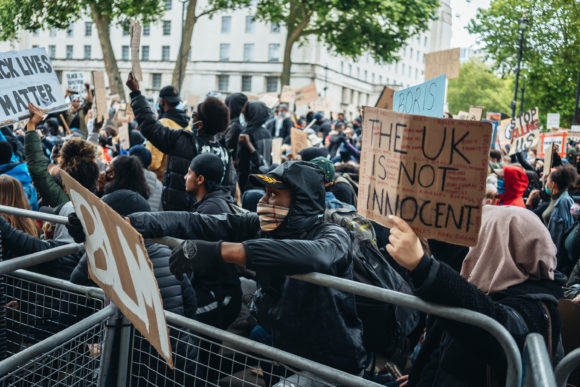London is facing up to its role in insuring the slave trade as part of a sweeping global reassessment of history and racism.
This reappraisal was triggered by the death of George Floyd, a black man who died after a Minneapolis police officer knelt on his neck for nearly nine minutes while detaining him.
For centuries, London has maintained a pre-eminent role in financing global trade and on Thursday the Lloyd’s of London insurance market apologized for its “shameful” role in the 18th and 19th Century Atlantic slave trade.
About 17 million African men, women and children were torn from their homes and shackled into one of the world’s most brutal globalized trades between the 15th and 19th centuries. Many died in merciless conditions.
By the late 18th Century, Britain was the leading slaver nation, carrying about 40% of Africans transported between 1761 and the abolition of the trade in 1807.
Other major traders were Portugal/Brazil, with about 32% of the market, and France, with about 17%. American and Dutch ships were also involved, with around 6% and 3% respectively.
How important was slavery to British maritime insurance?
There is a lack of documentary evidence from the time, but historians have estimated that the slave and West India trades combined accounted for 41% of British marine insurance in the 1790s.
(For more information: Insuring the Transatlantic Slave Trade.)
“Between a third and 40 percent of London marine insurance in the 18th Century was accounted for by the slave trade and by the movement of slave grown produce across the Atlantic,” said Nick Draper, former director of the Centre for the Study of the Legacies of British Slave-ownership.
“Those ships bringing sugar to Britain had a valuable cargo and the ships themselves were valuable and often coming through enemy waters because Britain was at war for long periods.”
Who were the big players?
There were three main marine insurers in the 18th Century: London Assurance, Royal Exchange and Lloyd’s of London.
“Lloyd’s had the dominant insurance business – probably had 80-90 percent of the market,” said Draper.
“By 1807 when the slave-trade was abolished, it was relatively unimportant to marine insurance and by the 1830s when slavery was abolished the sugar economy in turn had become less important. We were shipping then huge amounts of raw slave-grown cotton, for example, back to the UK from the American south.”
How did it work?
Slaves were seen as cargo by the insurance market of the time and generally included in the general insurance rate.
Often slaves were termed as a “parcel” whose value was determined by ethnicity, size, height, age, gender and health.
Slaves were also classified by underwriters as “perishable goods,” alongside cattle. Underwriters and courts dealt with slave losses arising from revolt as the equivalent of damage and losses caused by livestock panicking during a tempest.
“Most insurance policies for the slave trade excluded the death of enslaved people from disease or insurrection – they were insuring the ship against the perils of the sea,” said Draper. “But they were not insuring so that people were disembarked at the other end in a healthy condition.”
(Reporting by Guy Faulconbridge; editing by Alexander Smith)
Photograph: Black Lives Matter protest in London on June 6, 2020 during the coronavirus lockdown.
Related:
Topics Excess Surplus Market London Lloyd's Uk
Was this article valuable?
Here are more articles you may enjoy.



 Carnival Puts Miami Headquarters Up for Sale as Florida Real Estate Soars
Carnival Puts Miami Headquarters Up for Sale as Florida Real Estate Soars  Wildfires Are Upending Some of the Safest Bets on Wall Street
Wildfires Are Upending Some of the Safest Bets on Wall Street  Trump’s Bond Insurer Tells Judge Shortfall Is ‘Inconceivable’
Trump’s Bond Insurer Tells Judge Shortfall Is ‘Inconceivable’  California Chiropractor Sentenced to 54 Years for $150M Workers’ Comp Scheme
California Chiropractor Sentenced to 54 Years for $150M Workers’ Comp Scheme 

